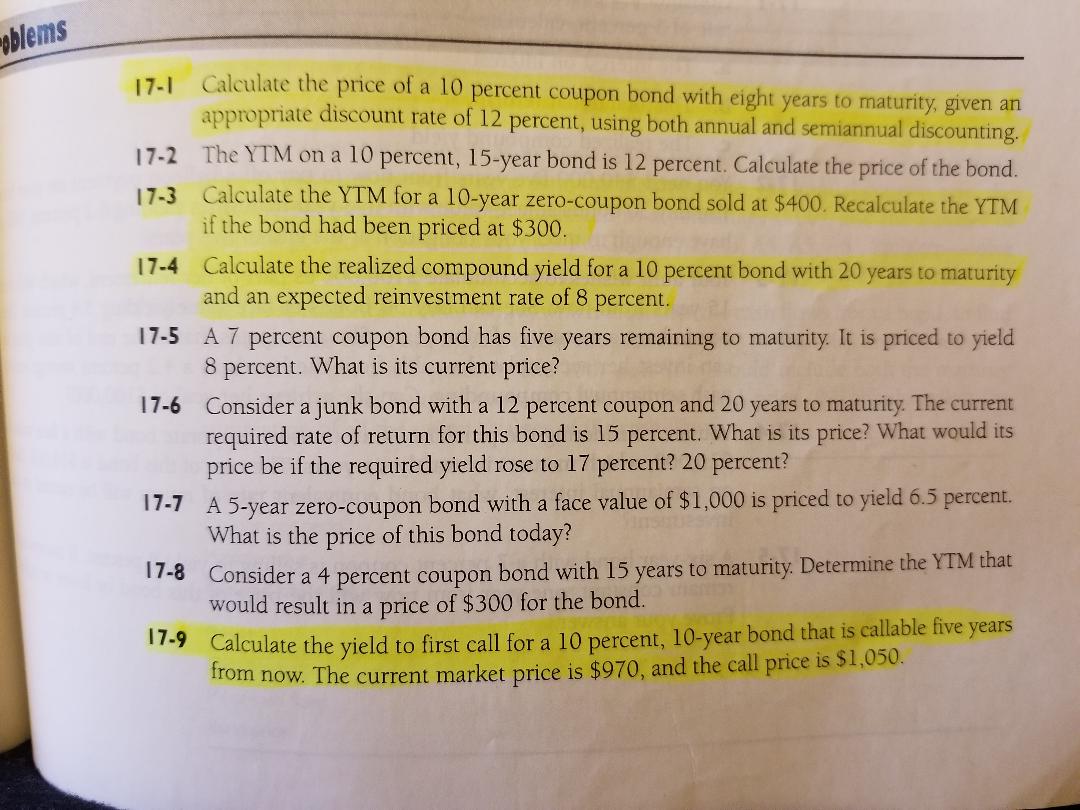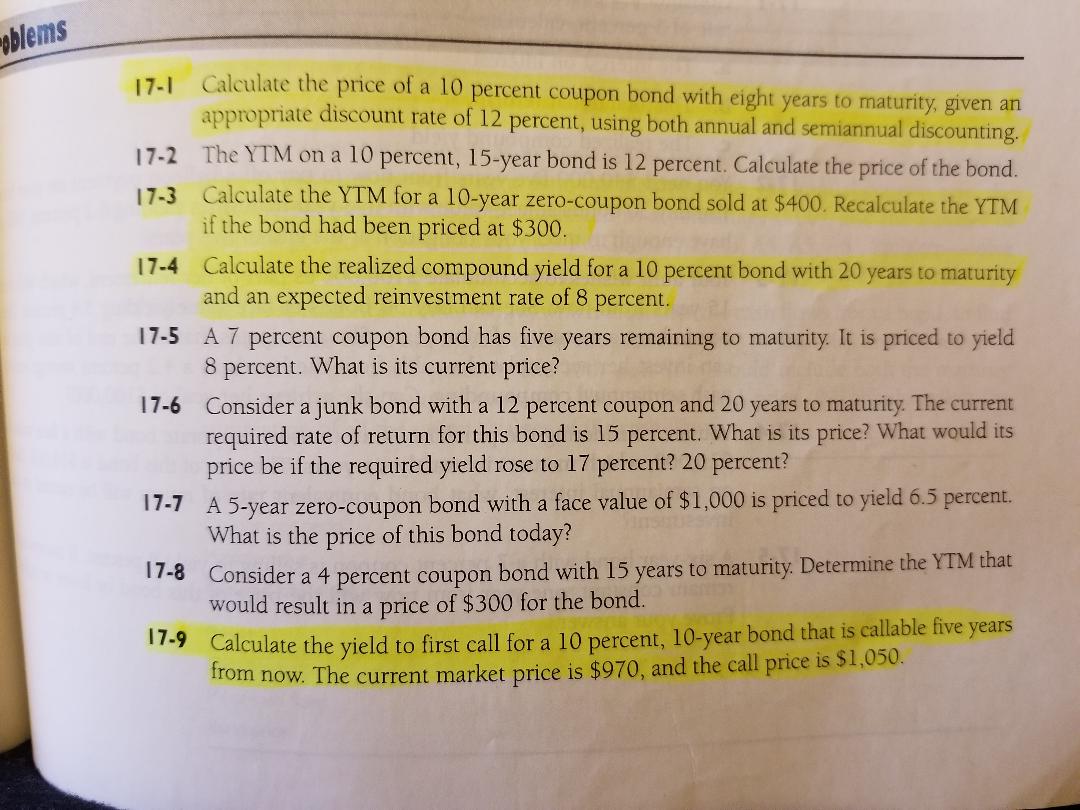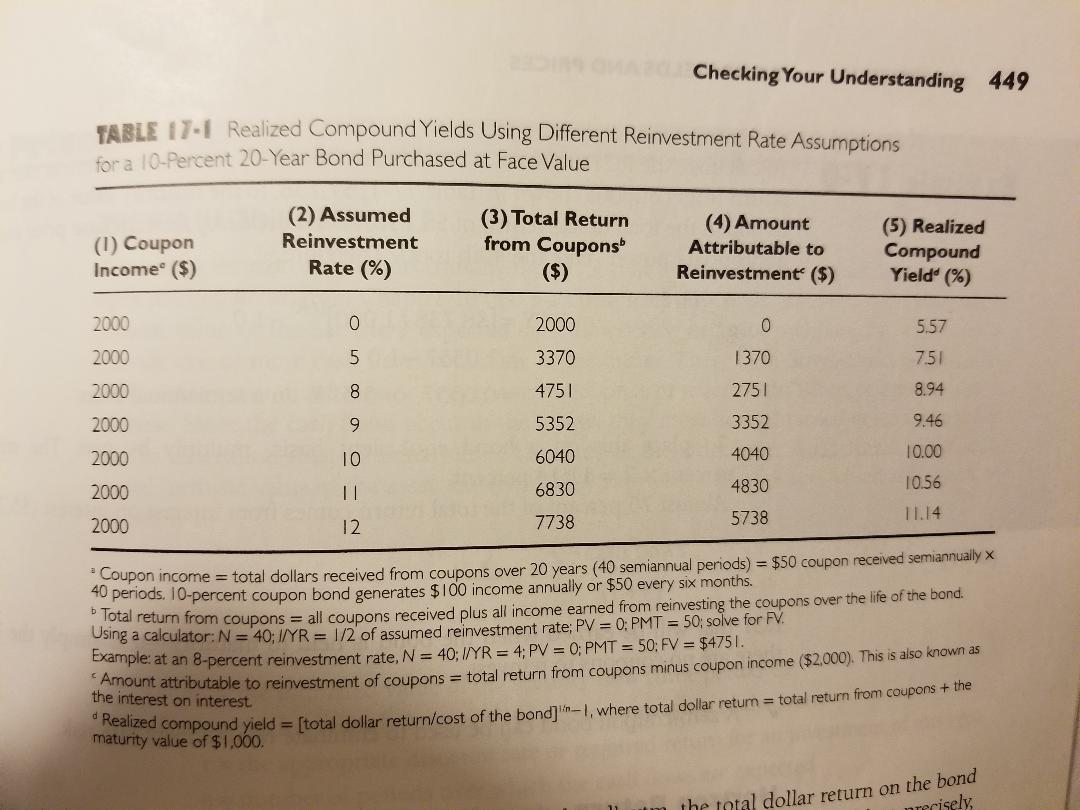

can someone explain to me how to work these questions ? the highlighted ones in yellow.
17-1. 17-3. 17-4. 17-9.
oblems 17-1 Calculate the price of a 10 percent coupon bond with eight years to maturity, given an appropriate discount rate of 12 percent, using both annual and semiannual discounting. 17-2 The YTM on a 10 percent, 15-year bond is 12 percent. Calculate the price of the bond. 17-3 Calculate the YTM for a 10-year zero-coupon bond sold at $400. Recalculate the YTM if the bond had been priced at $300. 17-4 Calculate the realized compound yield for a 10 percent bond with 20 years to maturity and an expected reinvestment rate of 8 percent. 17-5 A 7 percent coupon bond has five years remaining to maturity. It is priced to yield 8 percent. What is its current price? 17-6 Consider a junk bond with a 12 percent coupon and 20 years to maturity. The current required rate of return for this bond is 15 percent. What is its price? What would its price be if the required yield rose to 17 percent? 20 percent? 17-7 A 5-year zero-coupon bond with a face value of $1,000 is priced to yield 6.5 percent. What is the price of this bond today? 17-8 Consider a 4 percent coupon bond with 15 years to maturity. Determine the YTM that would result in a price of $300 for the bond. 17-9 Calculate the yield to first call for a 10 percent, 10-year bond that is callable five years from now. The current market price is $970, and the call price is $1,050.Checking Your Understanding 449 TABLE 17-1 Realized Compound Yields Using Different Reinvestment Rate Assumptions for a 10-Percent 20-Year Bond Purchased at Face Value (2) Assumed (1) Coupon (3) Total Return Reinvestment from Coupons (4) Amount Rate (%) Attributable to (5) Realized Income ($) ($) Compound Reinvestment ($) Yield (%) 2000 2000 0 2000 2000 00 UT 5.57 3370 1370 7.51 4751 2751 8.94 2000 5352 3352 9.46 2000 10 6040 4040 10.00 2000 11 6830 4830 10.56 2000 12 7738 5738 11.14 Coupon income = total dollars received from coupons over 20 years (40 semiannual periods) = $50 coupon received semiannually x 40 periods. 10-percent coupon bond generates $ 100 income annually or $50 every six months. Total return from coupons = all coupons received plus all income earned from reinvesting the coupons over the life of the bond. Using a calculator: N = 40; //YR = 1/2 of assumed reinvestment rate; PV = 0; PMT = 50; solve for FV. Example: at an 8-percent reinvestment rate, N = 40; //YR = 4; PV = 0; PMT = 50; FV = $4751. Amount attributable to reinvestment of coupons = total return from coupons minus coupon income ($2,000). This is also known as the interest on interest. Realized compound yield = [total dollar return/cost of the bond]in- I, where total dollar return = total return from coupons + the maturity value of $1,000. al dollar return on the bond isely










